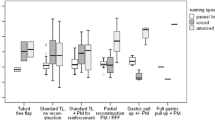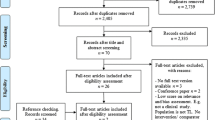Abstract
The aim was to investigate telephonic voice intelligibility in patients treated for laryngeal cancer using different approaches. In total, 90 patients treated for laryngeal cancer using different approaches and 12 healthy volunteers were recruited. Each patient and each healthy control read a list of words and sentences during a telephone call. Six auditors listened to each telephonic recording and transcribed the words and sentences they understood. Mean intelligibility rates for each treatment were assessed and compared. Regarding words, the poorest intelligibility was noted for type II open partial horizontal laryngectomies, followed by total laryngectomies. The best intelligibility was found for transoral laser microsurgery, followed by radiotherapy alone. For sentences, the poorest intelligibility was noted for type II open partial horizontal laryngectomies, followed by chemoradiotherapy. The best intelligibility was found for radiotherapy alone and transoral laser microsurgery. More aggressive surgery as well as chemoradiotherapy correlated with significantly poorer outcomes. Transoral laser microsurgery or radiotherapy alone ensured the best telephonic voice intelligibility. Intermediate-advanced T stages at diagnosis also showed significantly poorer intelligibility outcomes, suggesting that T stage represents an independent negative prognostic factor for voice intelligibility after treatment.








Similar content being viewed by others
References
Yorkston KM, Bourgeois MS, Baylor CR (2010) Communication and aging. Phys Med Rehabil Clin N Am 21(2):309–319
The World in 2014: ICT Facts and Figures. http://www.itu.int/en/ITU-D/Statistics/Pages/facts/default.aspx). Accessed May 2016
Mosconi P, Cifani S, Crispino S, Fossati R, Apolone G, Head and Neck Cancer Italian Working Group (2000) The performance of Sf-36 health survey in patients with laryngeal cancer. Head Neck 22:175–182
Weinstein GS, El-Sawy MM, Ruiz C et al (2001) Laryngeal preservation with supracricoid partial laryngectomy results in improved quality of life when compared with total laryngectomy. Laryngoscope 111:191–199
Olthoff A, Steuer-Vogt MK, Licht K, Sauer-Goenen M, Werner C, Ambrosch P (2006) Quality of life after treatment for laryngeal carcinomas. ORL J Otorhinolaryngol Relat Spec 68:253–258
Laccourreye H, Laccourreye O, Weinstein G, Menard M, Brasnu D (1990) Supracricoid laryngectomy with cricohyoidopexy: a partial laryngeal procedure for selected supraglottic and transglottic carcinomas. Laryngoscope 100:735–741
Department of Veterans Affairs Laryngeal Cancer Study Group (1991) Induction chemotherapy plus radiation compared with surgery plus radiation in patients with advanced laryngeal cancer. N Engl J Med 324:1685–1690
de Vincentiis M, Minni A, Gallo A, Di Nardo A (1998) Supracricoid partial laryngectomies: oncologic and functional results. Head Neck 20:504–509
Bron L, Brossard E, Monnier P, Pasche P (2000) Supracricoid partial laryngectomy with cricohyoidoepiglottopexy and cricohyoidopexy for glottic and supraglottic carcinomas. Laryngoscope 110:627–634
Forastiere AA, Goepfert H, Maor M et al (2003) Concurrent chemotherapy and radiotherapy for organ preservation in advanced laryngeal cancer. N Engl J Med 349:2091–2098
Lefebvre JL (2006) Laryngeal preservation in head and neck cancer: multidisciplinary approach. Lancet Oncol 7:747–755
De Virgilio A, Fusconi M, Gallo A et al (2012) The oncologic radicality of supracricoid partial laryngectomy with cricohyoidopexy in the treatment of advanced N0–N1 laryngeal squamous cell carcinoma. Laryngoscope 122:826–833
Rizzotto G, Crosetti E, Lucioni M, Succo G (2012) Subtotal laryngectomy: outcomes of 469 patients and proposal of a comprehensive and simplified classification of surgical procedures. Eur Arch Otorhinolaryngol 269:1635–1646
Caicedo-Granados E, Beswick DM, Christopolous A et al (2013) Oncologic and functional outcomes of partial laryngeal surgery for intermediate-stage laryngeal cancer. Otolaryngol Head Neck Surg 148:235–242
Forastiere AA, Zhang Q, Weber RS et al (2013) Long-term results of RTOG 91-11: a comparison of three nonsurgical treatment strategies to preserve the larynx in patients with locally advanced larynx cancer. J Clin Oncol 31:845–852
Rizzotto G, Crosetti E, Lucioni M et al (2015) Oncological outcomes of supratracheal laryngectomy: a critical analysis. Head Neck 37(10):1417–1424
Remacle M, Eckel HE, Antonelli A et al (2000) Endoscopic cordectomy. A proposal for a classification by the Working Committee, European Laryngological Society. Eur Arch Otorhinolaryngol 257(4):227–231
Succo G, Peretti G, Piazza C et al (2014) Open partial horizontal laryngectomies: a proposal for classification by the Working Committee on Nomenclature of the European Laryngological Society. Eur Arch Otorhinolaryngol 271(9):2489–2496
Gli Italiani passano un quarto della giornata al telefono [The Italians spend a quarter of the day on the phone] https://cellulari.supermoney.eu/news/2012/05/in-tempo-di-crisi-al-cellulare-non-si-rinuncia-gli-italiani-passano-il-25-del-loro-tempo-al-telefonino-003819.html; http://www.supermoney.eu. Accessed May 2016
Eksteen EC, Rieger J, Nesbitt M, Seikaly H (2003) Comparison of voice characteristics following three different methods of treatment for laryngeal cancer. J Otolaryngol 32:250–253
Saito K, Araki K, Ogawa K, Shiotani A (2009) Laryngeal function after supracricoid laryngectomy. Otolaryngol Head Neck Surg 140:487–492
Webster KT, Samlan RA, Jones B, Bunton K, Tufano RP (2010) Supracricoid partial laryngectomy: swallowing, voice, and speech outcomes. Ann Otol Rhinol Laryngol 119:10–16
So YK, Yun YS, Baek CH, Jeong HS, Son YI (2009) Speech outcome of supracricoid partial laryngectomy: comparison with total laryngectomy and anatomic considerations. Otolaryngol Head Neck Surg 141:770–775
Laudadio P, Presutti L, Dall’olio D, Cunsolo V, Condslici R, Amorosa L (2006) Supracricoid laryngectomies: long-term oncological and functional results. Acta Otolaryngol 126:640–649
Bron L, Pasche P, Brossard E, Monnier P, Schweizer V (2002) Functional analysis after supracricoid partial laryngectomy with cricohyoidoepiglottopexy. Laryngoscope 122:1289–1293
Dworkin JP, Meleca RJ, Zacharek MA et al (2003) Voice and deglutition functions after the supracricoid and total laryngectomy procedures for advanced stage laryngeal carcinoma. Otolaryngol Head Neck Surg 129:311–320
Torrejano G, Guimarães I (2009) Voice quality after supracricoid laryngectomy and total laryngectomy with insertion of voice prosthesis. J Voice 23:240–246
Schindler A, Fantini M, Pizzorni N et al (2015) Swallowing, voice, and quality of life after supratracheal laryngectomy: preliminary long-term results. Head Neck 37(4):557–566
Schindler A, Pizzorni N, Fantini M et al (2016) Long-term functional results after open partial horizontal laryngectomy type IIa and type IIIa: a comparison study. Head Neck 38(Suppl 1):E1427–E1435. doi:10.1002/hed.24254 (Epub 2015 Nov 11)
D’Alatri L, Bussu F, Scarano E, Paludetti G, Marchese MR (2012) Objective and subjective assessment of tracheoesophageal prosthesis voice outcome. J Voice 26(5):607–613
Moerman M, Martens JP, Dejonckere P (2004) Application of the Voice Handicap Index in 45 patients with substitution voicing after total laryngectomy. Eur Arch Otorhinolaryngol 261(8):423–428
Pereira da Silva A, Feliciano T, Vaz Freitas S, Esteves S, Almeida E, Sousa C (2015) Quality of life in patients submitted to total laryngectomy. J Voice 29(3):382–388
Robertson SM, Yeo JC, Dunnet C, Young D, Mackenzie K (2012) Voice, swallowing, and quality of life after total laryngectomy: results of the west of Scotland laryngectomy audit. Head Neck 34(1):59–65
Schindler A, Mozzanica F, Ginocchio D, Invernizzi A, Peri A, Ottaviani F (2012) Voice-related quality of life in patients after total and partial laryngectomy. Auris Nasus Larynx 39(1):77–83
Peretti G, Piazza C, Balzanelli C, Mensi MC, Rossini M, Antonelli AR (2003) Preoperative and postoperative voice in Tis-T1 glottic cancer treated by endoscopic cordectomy: an additional issue for patient counseling. Ann Otol Rhinol Laryngol 112(9 Pt 1):759–763
Peretti G, Piazza C, Del Bon F et al (2013) Function preservation using transoral laser surgery for T2–T3 glottic cancer: oncologic, vocal, and swallowing outcomes. Eur Arch Otorhinolaryngol 270(8):2275–2281
Czecior E, Orecka B, Pawlas P et al (2012) Comparative assessment of the voice in patients treated for early glottis cancer by laser cordectomy or radiotherapy. Otolaryngol Pol 66(6):407–412
Aaltonen LM, Rautiainen N, Sellman J et al (2014) Voice quality after treatment of early vocal cord cancer: a randomized trial comparing laser surgery with radiation therapy. Int J Radiat Oncol Biol Phys 90(2):255–260
Cohen SM, Garrett CG, Dupont WD, Ossoff RH, Courey MS (2006) Voice-related quality of life in T1 glottic cancer: irradiation versus endoscopic excision. Ann Otol Rhinol Laryngol 115(8):581–586
Lau VH, Leonard RJ, Goodrich S et al (2012) Voice quality after organ-preservation therapy with definitive radiotherapy for laryngeal cancer. Head Neck 34(7):943–948
Al-Mamgani A, Tans L, van Rooij P, Levendag PC (2012) A single-institutional experience of 15 years of treating T3 laryngeal cancer with primary radiotherapy, with or without chemotherapy. Int J Radiat Oncol Biol Phys 1 83(3):1000–1006
Campos RJ, Maciel CT, Cesca MG, Leite IC (2011) Voice analysis after cancer treatment with organ preservation. Head Neck Oncol 19(3):19
Carrara-de Angelis E, Feher O, Barros AP, Nishimoto IN, Kowalski LP (2003) Voice and swallowing in patients enrolled in a larynx preservation trial. Arch Otolaryngol Head Neck Surg 129(7):733–738
Acknowledgments
Sincere thanks to Professor AR Antonelli for valuable suggestions and encouragement to continue research in the field of laryngeal oncology and to Miss V. Novanta and Dr. V. Carbonaro for their help as listeners.
Author information
Authors and Affiliations
Corresponding author
Ethics declarations
Conflict of interest
There are no competing interests for this article.
Rights and permissions
About this article
Cite this article
Crosetti, E., Fantini, M., Arrigoni, G. et al. Telephonic voice intelligibility after laryngeal cancer treatment: is therapeutic approach significant?. Eur Arch Otorhinolaryngol 274, 337–346 (2017). https://doi.org/10.1007/s00405-016-4217-9
Received:
Accepted:
Published:
Issue Date:
DOI: https://doi.org/10.1007/s00405-016-4217-9




